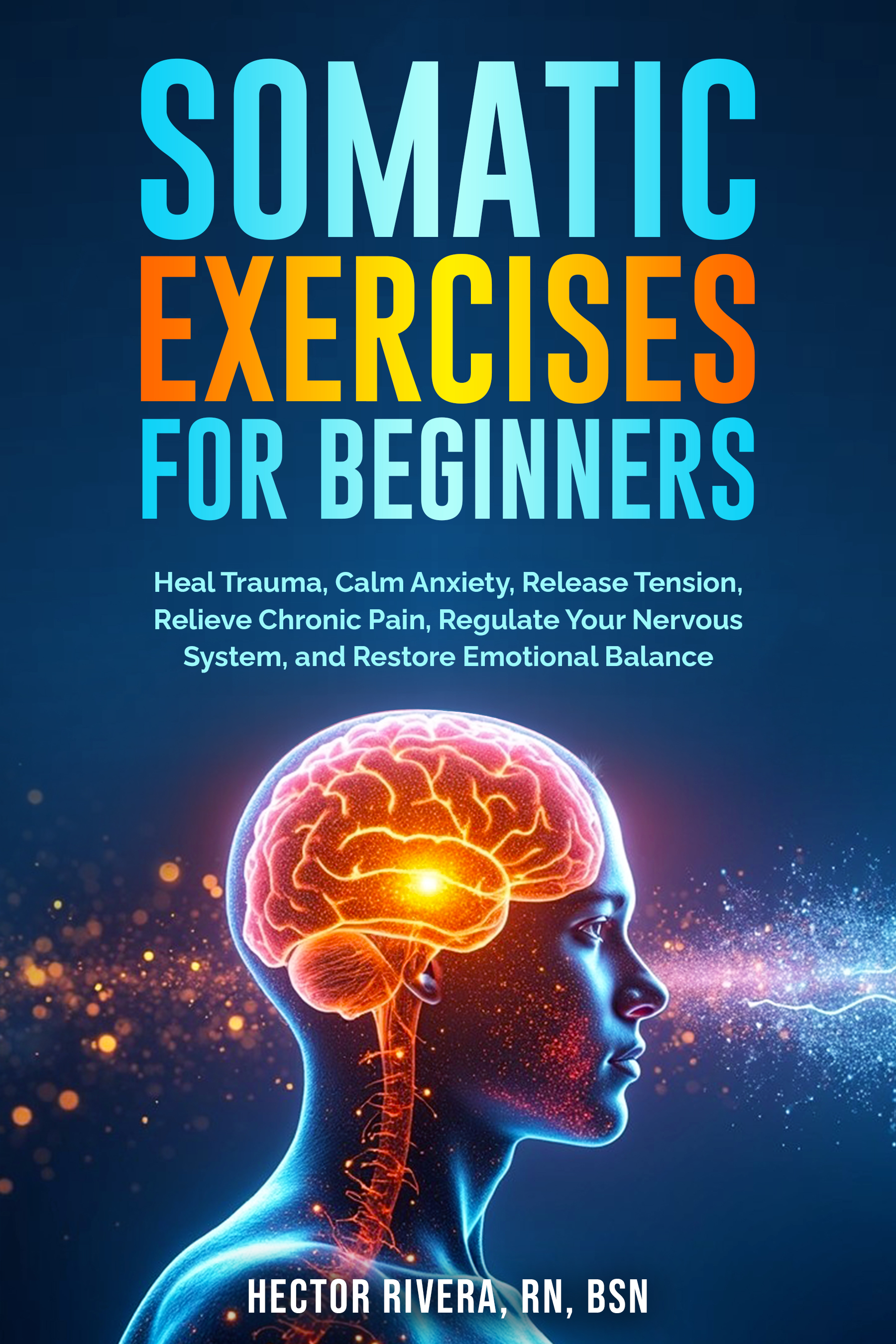List of Somatic Exercises

List of Somatic Exercises for Everyday Awareness and Healing
When people start exploring body-based healing, one of the most helpful places to begin is with a list of somatic exercises. These practices are gentle, practical, and designed to reconnect you with your body’s natural rhythms. They aren’t workouts or performance-based routines. Instead, they invite you to notice, breathe, and move with awareness, allowing your nervous system to calm and reset. Below is a comprehensive collection that illustrates what these practices can look like in everyday life. Many readers search for examples of somatic exercises, and this page brings them together in one place.
Somatic Breathing Exercises
Breathwork is one of the simplest ways to connect with your body. These somatic breathing exercises shift awareness inward and help regulate stress:
- Belly breathing — Take slow, deep breaths into the belly to calm tension.
- 3–3–6 breath — Inhale for three counts, hold for three, exhale for six.
- Sighing exhale — A full inhale followed by a long sighing release.
- Hand-to-chest breathing — Placing hands on chest and belly to track movement.
- Breath plus touch — Adding hand contact to the ribs or heart to deepen awareness.
- Gentle breath-holding and release — Brief pauses before relaxing into exhale.
- Alternate nostril breathing — A yoga-based technique adapted for nervous system balance.
Somatic Movement Exercises
Somatic movement exercises bring awareness to how the body holds and releases stress. These examples of somatic exercises encourage slow, mindful motion:
- Pandiculation — Gentle contraction followed by release, like a natural stretch.
- Pendulation — Moving between areas of tension and areas of ease.
- Micro-movements — Tiny, slow shifts like shoulder rolls or head tilts.
- Pelvic tilts and rocking — Rhythmic movement to release the lower back.
- Spinal rolling or arching — Gradual, controlled rolling of the spine.
- Feldenkrais drills — Awareness-through-movement practices, such as rolling side to side.
- Intuitive movement — Letting the body choose its own pace and flow.
- Tremoring/shaking — Allowing natural shaking to discharge built-up stress.
Somatic Grounding Exercises
Somatic Grounding Exercises bring attention to how your body connects with support in the present moment. These practices are beneficial when stress feels overwhelming:
- Body scan — Head-to-toe awareness without judgment.
- Feet awareness — Noticing weight and sensation in the feet.
- Sitting bones awareness — Tracking how weight settles into a chair.
- Wall or surface press — Using resistance to feel grounded and steady.
- Weighted blanket or self-holding — Hugging yourself or using gentle pressure for comfort.
- 5–4–3–2–1 sensory grounding — Naming five things you see, four you feel, three you hear, two you smell, one you taste.

Somatic Sensory Awareness Exercises
The senses are powerful anchors to the present. These Somatic Sensory Awareness exercises practices build awareness through simple, everyday experiences:
- Orienting — Slowly turning your head and noticing the space around you.
- Texture exploration — Running your hands across fabric, wood, or natural surfaces.
- Temperature play — Holding a warm cup or cool stone to feel contrast.
- Sound anchoring — Noticing nearby, midrange, and distant sounds.
- Scent awareness — Breathing in and tracking subtle smells in the environment.
- Mindful eating — Tuning into texture, temperature, and taste while eating slowly.
Somatic Touch & Self-Soothing Exercises
Touch is one of the most direct ways to settle the nervous system. These exercises bring warmth and reassurance:
- Hand-to-heart or hand-to-belly — Simple, grounding contact.
- Gentle face touch — Stroking the jaw, temples, or cheeks.
- Butterfly hug — Crossing arms and tapping shoulders lightly.
- Stroking arms or legs — Using slow touch to soothe muscles.
- Hand massage — Rubbing palms together to warm and stimulate circulation.
- Layered hands — Resting one hand on the other and noticing sensation.
Somatic Mind-Body Practices
These exercises build awareness by linking imagination, breath, and gentle movement:
- Guided imagery — Visualizing warmth or openness in tense areas.
- Progressive relaxation — Tensing and releasing muscles one by one.
- Embodied journaling — Writing down sensations before emotions or thoughts.
- Vocal toning/humming — Creating vibration through the chest and head.
- Gentle rocking — Swaying rhythmically to calm the nervous system.
- Movement with breath — Walking or stepping in time with inhale and exhale.
Somatic Creative/Expressive Practices
Creativity can also be a somatic doorway, offering expression and release:
- Drawing or painting with awareness — Noticing body responses as you create.
- Music or drumming — Feeling rhythm through hands or body.
- Free dancing — Moving without performance, guided by sensation.
- Nature immersion — Touching tree bark, listening to leaves, or feeling air on your skin.
- Barefoot walking — Exploring grass, sand, or stone to stimulate awareness.
This list demonstrates the accessibility and diversity of somatic exercises. You don’t need a gym, special gear, or long hours to practice. You only need a few minutes and the willingness to notice. You can adjust each of these practices to your comfort level, and the more you explore them, the more naturally they fit into your life. A list of somatic exercises provides practical options. Still, the real value lies in learning to listen to your body and letting it guide the pace.
Sources
- Levine, P. A. (1997). Waking the Tiger: Healing Trauma. North Atlantic Books.
- Hanna, T. (1988). Somatics: Reawakening the Mind's Control of Movement, Flexibility, and Health. Da Capo Press.
- Feldenkrais, M. (1972). Awareness Through Movement. Harper & Row.
- Ogden, P., Minton, K., & Pain, C. (2006). Trauma and the Body: A Sensorimotor Approach to Psychotherapy. W. W. Norton & Company.
Return to Somatic Exercises or Return to the Home Page
Medical Disclaimer: The information on this website is for educational purposes only and is not a substitute for professional medical advice, diagnosis, or treatment. Always consult a qualified healthcare provider with any questions you may have about your health or a medical condition. Never ignore professional medical advice or delay seeking it because of something you have read here.

